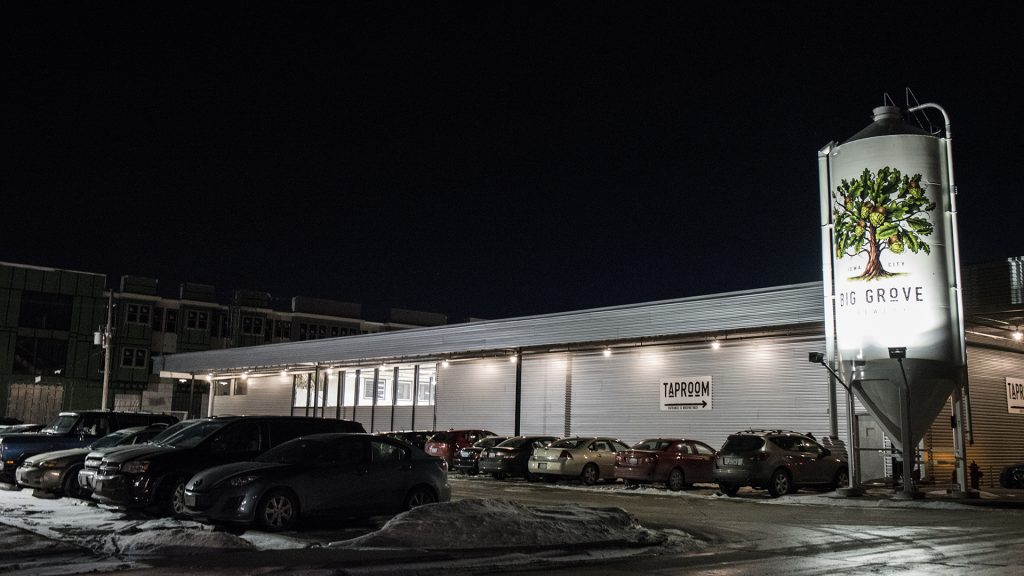Big Grove Brewery features some history of the North Side beer caves.
Paul Elwell
james-elwell@uiowa.edu
Iowa City beer enthusiasts had an opportunity to learn about a piece of local beer history over brews of their own.
Two University of Iowa faculty members have studied, including scanning, the beer caves, a series of tunnels that run beneath part of the North Side once owned by the Union Brewing Co.
The researchers shared their findings at Big Grove Brewery and Taproom as a part of an ongoing series about the history of brewing in Iowa City during the 19th century.
Beer caves were a staple among grocers and brewers in the 1800s. One audience member said, “Every brewing company in the 19th century had a cellar underground to keep their beer cold. It was the only way back then.”
At the beginning of their presentation, UI Geographic Information System administrator Adam Skibbe jokingly said, “Drink every time you hear the word LiDAR” — a dangerous game if played properly, because of the researchers’ enthusiasm about the machine and the amount of beer flowing in the taproom.
LiDAR is a laser-scanning machine that sets millions of points in a 270-degree area. After the points are set, they are put in to a computer program that remodels whatever surface that has been scanned in a three-dimensional environment. After scanning with lasers, the machine then takes photographs to lay over the points taken by the laser, adding texture.
RELATED: Big Grove Brewery supports local nonprofits
LiDAR can scan things such as inscriptions in caves or rock formations in places that are generally off-limits to the public.
“With these images, we can give students a realistic look at many things they generally would not be allowed to see,” Michelle Wienhold, a UI GIS analyst said. “And with further implementation into virtual reality, they can get firsthand experience, making these scans even more valuable.”
Skibbe, Wienhold, and their team, consisting of members of the student organization ICIGO, a group interested in GIS research, perform scans around campus and the entire state.
They took requests on things they thought would be interesting to scan, and eventually, someone suggested they scan the beer caves.
The group soon found that getting into the deep caves was very exclusive.
“You had to be healthy enough to even go down there,” Skibbe said. “About half our team was not allowed to enter the caves at all.”
A virtual environment produced by the scans could make it possible for anybody to explore.
The group accumulated approximately 75 million points of data from the laser over a period of six scans.
“Everything you’re seeing is individual point,” Skibbe said, explaining a model to the audience. “If you get within a millimeter of one of the walls, you can see the space between them.”
On Feb. 21, the History at the Grove series will feature Doug Alberhaskey of John’s Grocery, who will share what it was like to live in Iowa City when three large breweries sat on the North Side during the 19th century.



